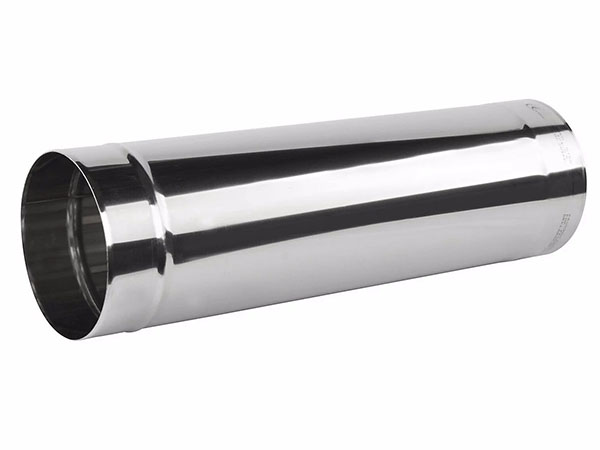Stainless Steel Stove Pipe is a crucial pipe that connects wood-burning stoves, fireplaces, or other combustion equipment to chimney systems for the safe and efficient discharge of smoke. Compared with traditional black steel or aluminum-zinc furnace tubes, stainless steel furnace tubes have better corrosion resistance and high-temperature resistance, as well as an attractive appearance and low maintenance costs. They have become the mainstream choice for modern household and commercial stove flue gas emission systems.
Common stainless steel grades
304 (SUS304) : The most common heat-resistant stainless steel, with a chromium content of approximately 18% and a nickel content of about 8%, is suitable for most residential stoves.
316/316L (SUS316/316L) : Based on 304, molybdenum is added to further enhance the resistance to chloride corrosion, making it suitable for coastal or industrial corrosive environments.
430 (SUS430) : It has a relatively low cost, a high chromium content but contains (or very little) nickel, decent heat resistance, but slightly inferior corrosion resistance. It is typically used for short-section indoor connections.

Comparison of structural types
Single-layer furnace tube (Single-Wall)
Structure: Made of single-layer stainless steel by rolling, one end is curled (with a slightly smaller diameter), and the other end is a socket.
Advantages and disadvantages: Low cost, light weight, and flexible installation; However, the surface temperature is high (up to 200-300 ℃), and it is necessary to maintain a safety distance of ≥18 "(about 46 cm) from combustible materials. Moreover, condensation and tar are prone to occur in the flue.
Common specifications: Diameter 6 ", 7 ", 8 "(approximately 152, 178, 203 mm), length 2 ft (61 cm), 3 ft (91 cm), 4 ft (122 cm), etc.
2. Double-Wall Insulated furnace tubes
Construction: The inner layer is a heat-resistant stainless steel pipe, wrapped with high-temperature glass fiber and other insulating materials, and then sealed with an outer layer of stainless steel or galvanized steel plate. There is an air layer of about 25-38 mm left between the two layers.
Advantages:
The outer surface temperature is low (≈50-70 ℃), and it can be kept at a distance of only 2-3 "(≈5-8 cm) from combustible materials.
Maintain the high temperature of the flue gas, reduce condensation and tar formation, and enhance the pumping force;
Disadvantages: The cost and weight are relatively higher, and installation requires consideration of additional load-bearing capacity and compatibility with accessories.
3. Triple-Wall Air-Insulated furnace tubes
Structure: Inner layer is heat-resistant stainless steel, cavity air layer, and outer layer is wrapped with another layer of stainless steel or galvanized steel sheath, with free air flow in the middle.
Advantages:
The outer wall temperature is further reduced (≈30-50 ℃), and a minimum distance of 1 "(≈2.5 cm) can be maintained from combustibles.
It has excellent heat insulation effect and is suitable for environments with high decoration requirements or compact space.
Disadvantages: Higher cost, more complex manufacturing process, slightly increased flue gas resistance, and it is necessary to ensure sufficient suction force of the furnace.
Main components and accessories
Youdaoplaceholder0 Pipe Section
Standard length: 2-4 ft (61-122 cm) per layer; Double/triple insulation: 24 "(61 cm) or 36" (91 cm).
Elbow
Common angles: 45°, 90°, 135°; It can be divided into Short Radius and Long Radius.
Tee/Y-Pipe
90° three-way: It has a large width and high flow resistance, but a simple structure and is often equipped with a detachable cleaning port.
45° branch (Y) : The branch Angle is smaller, the flow resistance is lower, the carbon deposit is less, and it also has a cleaning port.
The advantages of using stainless steel furnace tubes
Strong durability: Stainless steel material can resist high temperatures and corrosion, extending the service life.
Easy installation: Many products are designed with adjustable lengths, reducing the need for cutting and crimping, and facilitating installation.
High safety: The double-layer design of the furnace tubes provides better heat insulation, reduces the safe distance from flammable materials, and lowers the risk of fire.
Easy maintenance: The smooth inner wall reduces the accumulation of soot and tar, making it convenient for cleaning and maintenance.
Read more: Stainless steel smoke pipe
